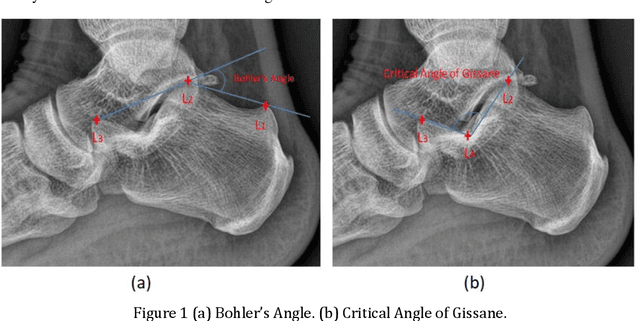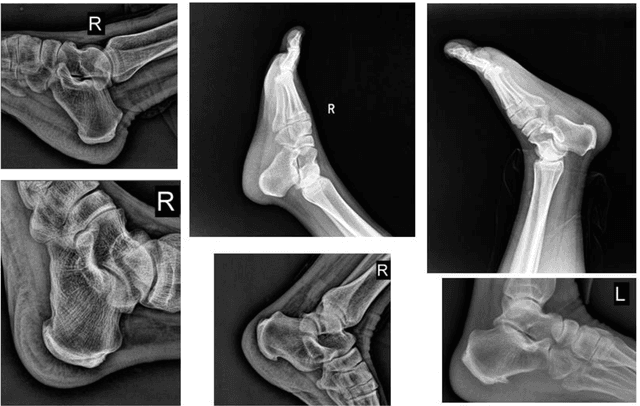Calcaneus Radiograph Analysis System: Rotation-Invariant Landmark Detection, Calcaneal Angle Measurement and Fracture Identification
Paper and Code
Feb 05, 2020



Calcaneus is the largest tarsal bone to withstand the daily stresses of weight bearing. The calcaneal fracture is the most common type in the tarsal bone fractures. After a fracture is suspected, plain radiographs should be taken first. Bohler's Angle (BA) and Critical Angle of Gissane (CAG), measured by four anatomic landmarks in lateral foot radiograph, can aid operative restoration of the fractured calcaneus and fracture diagnosis and assessment. The aim of this study is to develop a system to automatically locate four anatomic landmarks and measure BA and CAG for fracture assessment. To solved the problem of fickle rotation of calcaneus, we proposed a coarse-to-fine Rotation-Invariant Regression-Voting (RIRV) landmark detection method based on Supported Vector Regression (SVR) and Scale Invariant Feature Transform (SIFT) patch descriptor. By implementing a novel normalization approach to convert displacements into coordinates of oriented feature patches, our method is explicit rotation-invariance comparing with traditional regressive method. A multi-stream CNN structure with multi-region input is designed to screen calcaneus fracture. The input ROIs of multi-stream CNN are normalized by detected landmarks to uniform view, orientation and scale. The advantage of our approach is the usage of landmarks using prior knowledge to normalize the inputs of CNN so as to improve the efficiency of CNN. Experiments show that our CNN can accurately identify the fractures with sensitivity of 95.21% and specificity of 95.32%.
 Add to Chrome
Add to Chrome Add to Firefox
Add to Firefox Add to Edge
Add to Edge